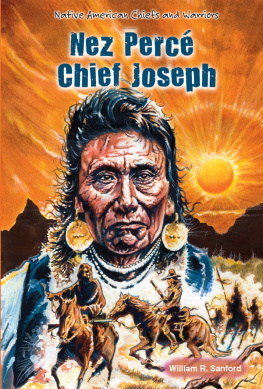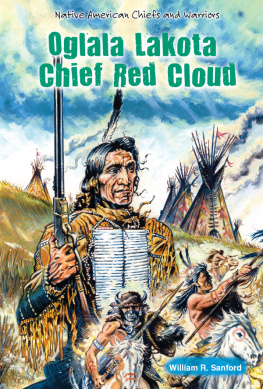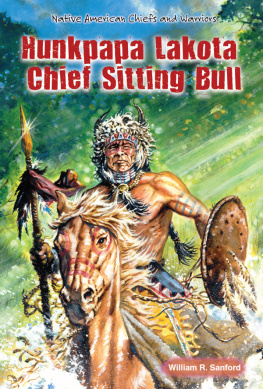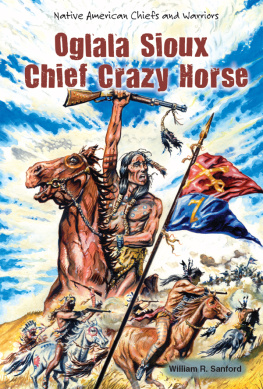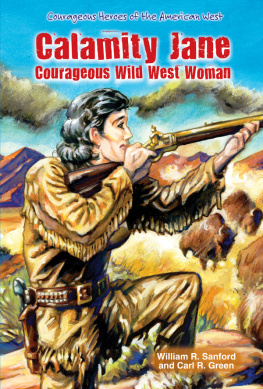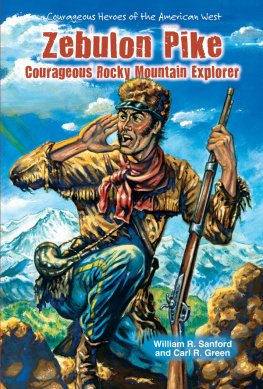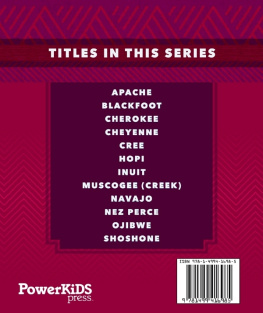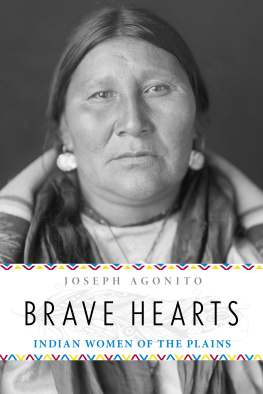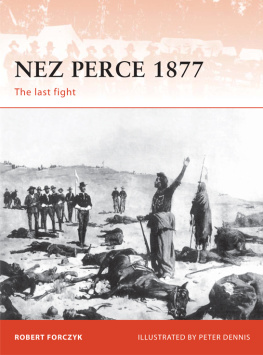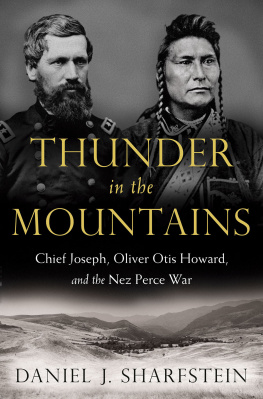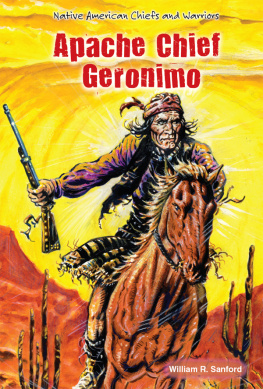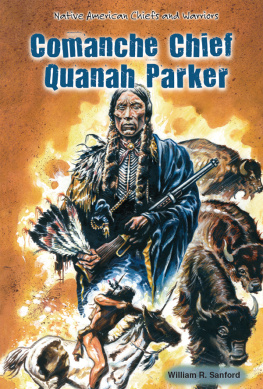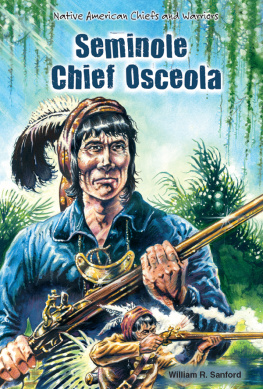Nez Perc Chief Joseph
The Nez Perc had lived peacefully with white settlers in the Pacific Northwest. But as more settlers arrived, more trouble began. Chief Joseph realized their way of life was in danger, and the courageous leader led hundreds of men, women, and children on a three-month flight for freedom to Canada, fighting the U.S. Army and traveling 1700 miles over the difficult terrain of the Rockies and northern plains.
Based on the words of Chief Joseph and other historical accounts, the author tells the story of one of the greatest journeys in American history.
About the Author
William R. Sanford is the author of numerous books for young people. He brings many years of teaching experience to the books he has created.
This book tells the true story of the Nez Perc leader, Chief Joseph. Many mistakenly think the great warrior led all the Nez Perc. His true fame rests on his leadership of only a few hundred. During his long march toward freedom, the press raced to print stories about Chief Joseph. Some were made up, but others were true. The events described in this book all really happened.
In French, Nez Perc (pronounced Nay Pear-say) means "pierced nose." In the early 1800s, French trappers first met the tribe. A few of the Native Americans wore dentalium shells through their noses. The practice was not common among these people, but the name stuck anyway.
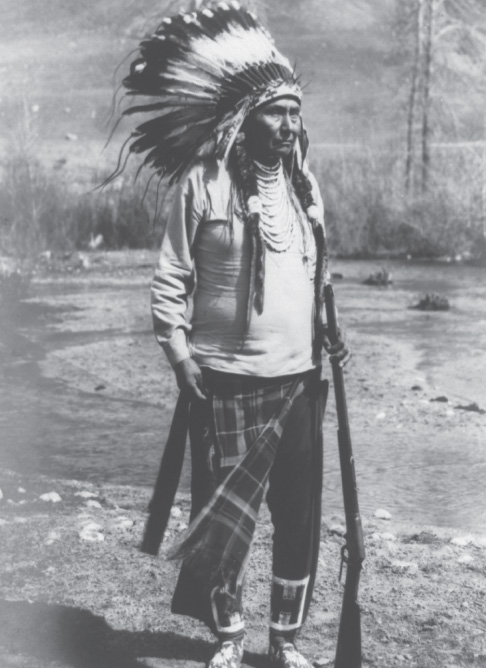
Image Credit: Library of Congress
Joseph was a strong leader of the Nez Perc, but he could not prevent war between them and the whites who settled on their territory.
Joseph and his brother Ollicutt returned to the Rocky Canyon camp. They had been gone for several days to butcher cattle. They learned that war with the white settlers had started. Shore Crossing, a member of White Birds band, had killed four whites. Two years before, settlers had killed his father. Other members of the band taunted him. Why, they asked, didnt he kill his fathers murderers? Shore Crossing set out to do just that. But he couldnt find the murderers. Instead, he killed four other Salmon River settlers. They were men who had done no harm to the Nez Perc. Later, Joseph said, I would have given my life if I could have undone the killing of white men by my people.
Many Nez Perc from other bands fled. They feared the whites would blame them for the killings. Joseph knew it didnt matter to which band Shore Crossing belonged. Whites would blame all the Nez Perc. Joseph led his band sixteen miles to White Bird Creek. There they would be safe from surprise attack. Within days Nez Perc warriors killed fourteen more settlers. The army had to respond.
General Oliver O. Howard led the army in the region. The general wired his superiors, Think we shall make short work of it.
Perry and his cavalrymen rode seventy miles in sixteen hours. Outside the camp a Nez Perc scout gave a warning coyote howl. The troops were coming. Joseph was ready. Soon after 4 A.M., June 17, 1877, light filled White Bird Canyon. A line of troopers four abreast rode down the narrow pass. Every able-bodied Nez Perc lay in wait. Joseph still hoped to avoid trouble. He sent a scout forward with a white flag of truce. The soldiers did not want to talk. One of them fired a shot. The battle had begun. Joseph commanded one end of the line; Ollicutt, the other. On the flanks, Little Runner attacked the soldiers right. Two Moons fired down from high ground on the left. The Nez Perc warriors used their rifles with deadly accuracy. Behind them the old men shot their arrows over the front lines heads.
Both sides found cover in the rocks. Neither could dislodge the other. The Nez Perc gathered a herd of horses. They drove them into the soldiers line. With the herd rode sixty of the fiercest warriors. These braves then opened fire from the soldiers rear. Perry had to fall back. The retreat lasted for hours.
The troops fell back at a walk. At times the Nez Perc dashed close. Then the troops would stop and fire a volley. They repeated this tactic over and over. Often the soldiers stopped for stragglers to catch up. Sometimes soldiers stumbled into dead-end canyons. There the Nez Perc killed them, one by one. The running battle covered a dozen miles. It ended four miles from the town of Mount Idaho. A relief force came to aid the soldiers. Then the Nez Perc finally broke off the attack.
No Nez Perc died in the battle. Only three received wounds. The soldiers suffered thirty-four deaths. It was one of the biggest defeats of the U.S. Army by Native Americans. Outraged, Howard vowed to hunt down the Nez Perc.

Image Credit: Shutterstock.com
The mile-wide Lake Wallowa in eastern Oregon was formed by glaciers. Permanent snow still caps the peaks around the lake.
The Nez Percs homeland included southeast Washington, north-central Idaho, and northeastern Oregon. It was a vast area of mountains, plains, valleys, and sagebrush plateaus. In the west, lofty peaks rose thousands of feet toward the sky. Even in summer, Blue-green forests covered their slopes, snowfields covered them. Mountain-rimmed lakes lay flat as mirrors. Trout broke the surface, leaping for flies. Clumps of sage dotted the foothills. Bunchgrass carpeted the plateaus. The winds blew warm and dry.
Joseph was born in the summer of 1840. His birthplace lay near the shores of Lake Wallowa in eastern Oregon. His father, Tuekas (Old Joseph), and mother, Arenoth, were Christians. Ollicutt, his younger brother, arrived two years later. As a child Joseph roamed the village naked. He watched the women grind flour from camas roots. He saw others using sharp stones to scrape the fat from the hides of deer and elk.
Once the sun set, the air grew chilly. The women built fires in front of the lodges. Young men made arrow points. Old women sewed beads on garments. Sometimes Joseph joined other children around the fire. Old warriors spoke of times past. They told ancient stories. At night Joseph stretched out under buffalo robes. The howls of the coyotes lulled him to sleep. When Joseph was five, he and his brother went to a mission school at Lapwai. He was too young to learn to read or write much English.
About 1850, some Nez Perc began to practice the Earth Mother or Dreamer religion. Its founder was the medicine man Smohalla. General Howard called him a large-headed, hump-shouldered, odd little wizard. The Nez Perc admired the prophet and followed his teaching. At times Smohalla had fits. When he passed out, he dreamed. Smohalla said that the Great Spirit revealed the future in dreams.
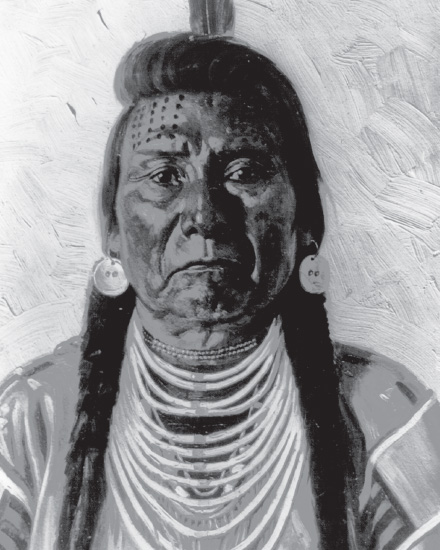
Image Credit: Library of Congress
Like other Nez Perc, Chief Joseph wore earrings and strings of beads. Beads were often made of shells, bones, porcupine quills, claws, antlers, or buffalo horns.
Smohalla taught that the Nez Perc should not adopt the ways of whites. They should not raise crops, nor live off white mens gifts. Doing so angered the Great Spirit. The earth was their sacred Mother. Smohalla compared plowing to cutting a mothers flesh. He said the Nez Perc should return to a simple life. Then, Smohalla promised, a great Native American leader would arise. He would drive out the whites. All the dead Native Americans would return to life.

